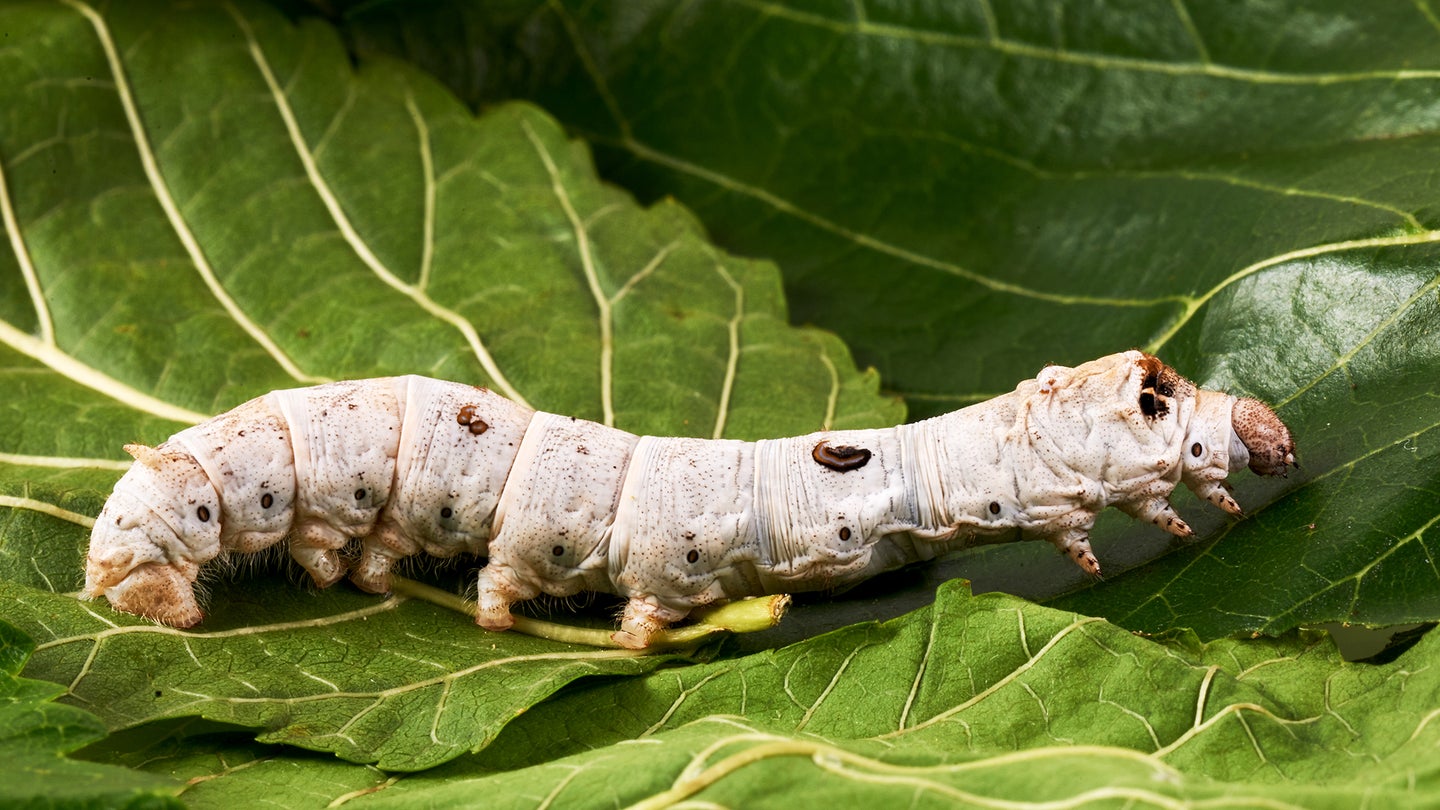Spider silk stronger than Kevlar spun by an unlikely source
Using CRISPR gene editing, researchers compelled common silkworms to produce material for durable new threads.

Researchers have coaxed common silkworms to spin a more durable, eco-friendlier spider silk—all it took was a few genetic modifications and hundreds of thousands of silkworm egg microinjections.
Synthetic commercial fabrics like nylon are notoriously harmful to the environment because of the carbon footprint from their production processes, as well as their tendency to shed microplastics during wash cycles. Although natural alternatives such as spider silk are incredibly attractive, farming spiders at an industrial scale is difficult given their comparatively low production rates, as well as their tendency to eat one another.
But what if another creature could produce ostensibly the same material in bulk, without all the cannibalism? Junpeng Mi’s team at Donghua University in Chinadid are moving towards that outcome using a combination of CRISPR gene editing and guided egg alterations, creating silkworms that spin silk identical to arachnids. As detailed in their paper recently published in Matter, the team’s breakthroughs have produced fibers which scientists claim are already six times tougher than bulletproof Kevlar.
[Related: A new kind of Kevlar aims to stop bullets with less material.]
In recent years, researchers have improved upon traditional silk’s durability, as well as created artificial spider silk. Even so, the latter’s manufacturing procedures weren’t great at applying a vital surface layer of lipids and glycoproteins to help the silk hold up to sunlight and humidity.
Mi’s team is the first to create silkworms whose excretions are ostensibly identical to spiders’ web material.
“Spider silk stands as a strategic resource in urgent need of exploration,” Mi said in a September 20 statement. “The exceptionally high mechanical performance of the fibers produced in this study holds significant promise in this field. This type of fiber can be utilized as surgical sutures, addressing a global demand exceeding 300 million procedures annually.”
[Related: Silkworm-inspired weaving techniques can produce better nanofibers.]
To create their silkworm-spider fibers, Mi and their fellow researchers first implanted spider silk protein genes from Araneus ventricosus, an East Asian orb-weaving spider, into silkworm DNA. From there, the team further modified the genetic makeup to ensure the transplanted proteins cooperated with silkworm glands to produce properly spun fibers.
The results went above and beyond the team’s hopes, offering a mix of high tensile strength and toughness alongside far more flexibility than anticipated. According to Mi’s team, the new silk manufacturing methods could boost advancements in biomedical engineering, aerospace technology, military capabilities, and other smart materials.
“This concept of ‘localization,’ introduced in this thesis, along with the proposed minimal structural model, represents a significant departure from previous research,” Mi said in their statement. “We are confident that large-scale commercialization is on the horizon.”
